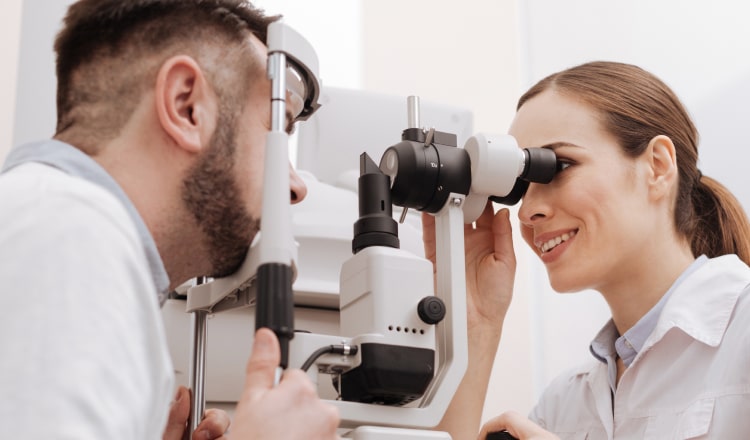Myopia, commonly known as shortsightedness or near-sightedness, is becoming more common in children, and reaching a level that some refer to as an epidemic. Usually, treatment for myopia is to wear glasses or contact lenses to correct vision, but there is now a better option for managing myopia.
What is myopia?
Myopia is what is known as a refractive error, where the light entering the eye doesn’t land in exactly the right place on the retina. Instead, the light focuses in front of the retina, causing things at a distance to appear blurred. The reason for the refractive error is that the eye is too long or the cornea is too curved. Once a child becomes myopic, usually between the ages of 8 and 13, it usually gets worse over time. This increases the chance of developing high myopia, which is linked to a higher risk of developing conditions such as glaucoma, cataracts and retinal detachment, in later life.
Who is affected?
Children who have one or both parents with myopia are at a higher risk of becoming myopic themselves. It is thought that myopia currently affects around a third of the world’s population and this is expected to rise to over half by 2050. Research is still underway but it is thought that prolonged hours of close work (including looking at a screen or reading) may contribute to increased risk of myopia.
Treatment for myopia
Because of the risk of myopia and the risks it poses to sight, a lot of research has gone into the management of the condition in recent years. While we don’t yet have a cure for myopia, there has been great success in managing the progression of myopia. This means that with special glasses or contact lenses, you can slow the rate at which myopia progresses in a child, reducing their risk of high myopia and the associated complications in later life.
As well as the treatment options we offer below, studies show that spending at least 2 hours per day outdoors can help to slow myopia progression.
MiSight
MiSight contact lenses are FDA-approved to slow the progression of myopia in children aged 8-12 when they start treatment. These daily disposable lenses use ActivControl technology to both correct nearsightedness and slow the progression of myopia by 59% on average. We find that most children take to contact lenses very easily, quickly learning how to insert, remove and care for their lenses. They feel confident when wearing them and they pose no hindrance when playing sports.
MiYOSMART
For children who prefer to wear glasses, there is still a solution for myopia management. MiYOSMART glasses lenses can slow myopia progression by 60% using advanced Defocus Incorporated Multiple Segments (D.I.M.S.) Technology. The lenses look like normal single-vision lenses but use a combination of a focus zone and a treatment zone, correcting vision and slowing myopia progression at the same time.
Find out more
If your child is near-sighted and you’d like to find out more about treatment to slow the progression of myopia, contact us to book an appointment.




